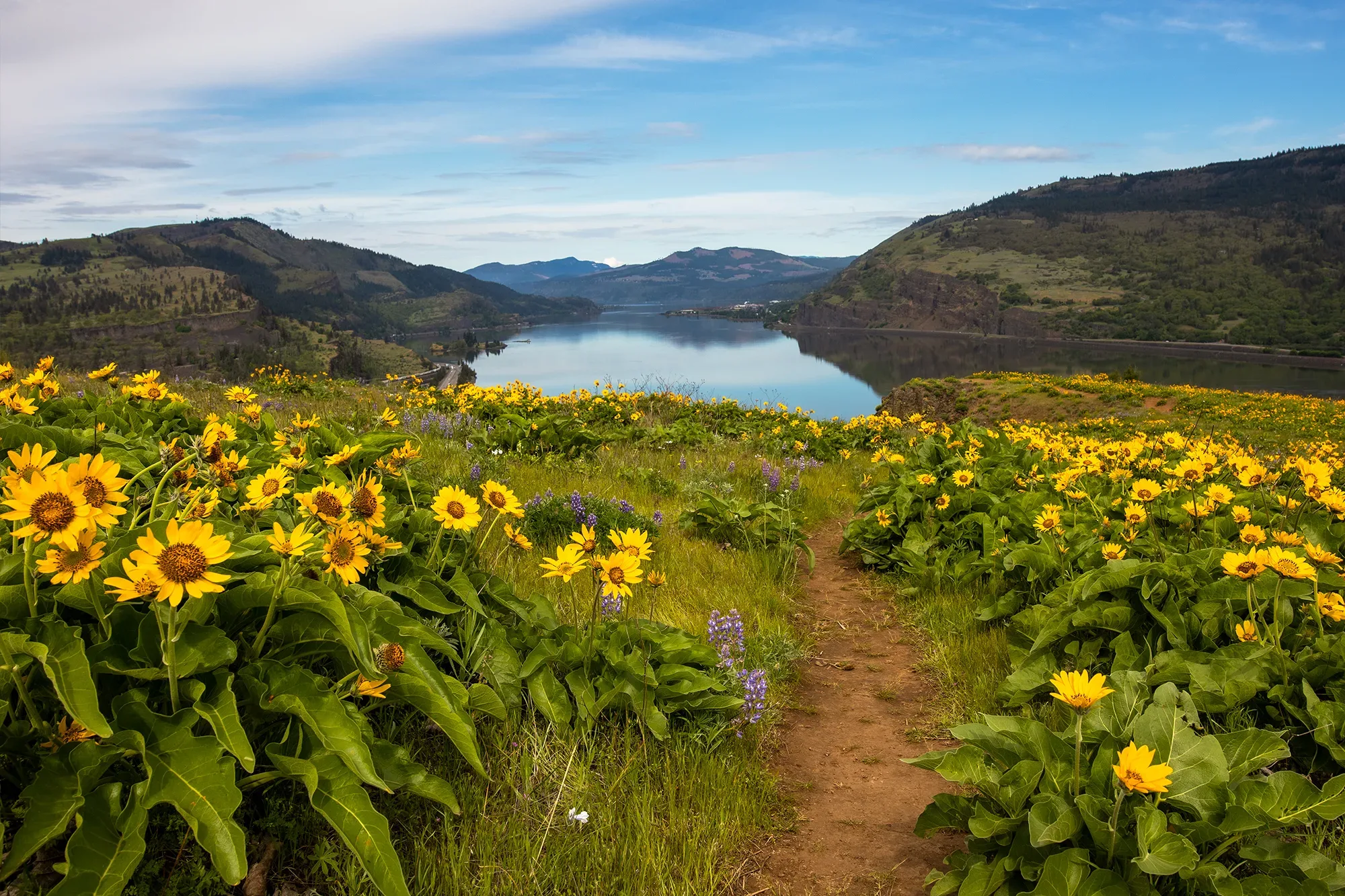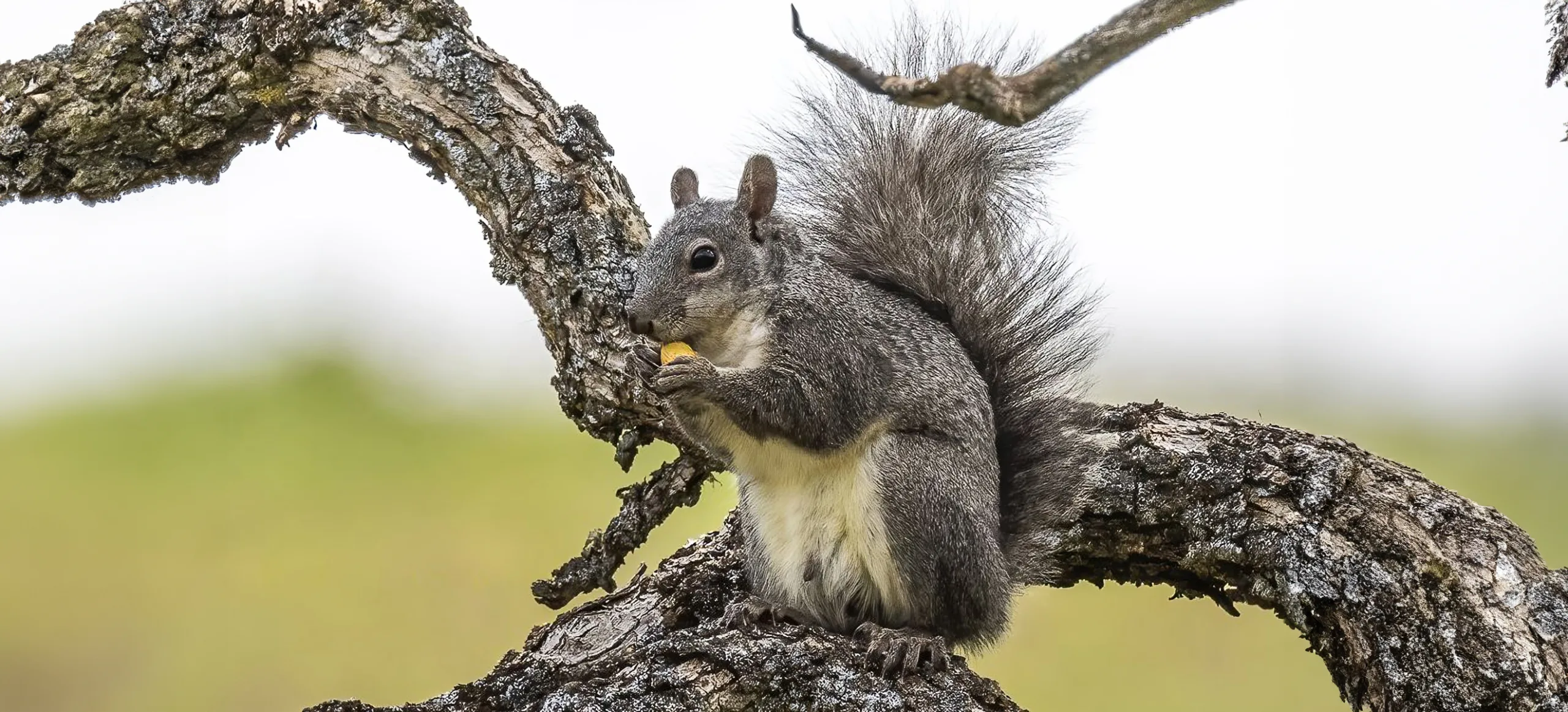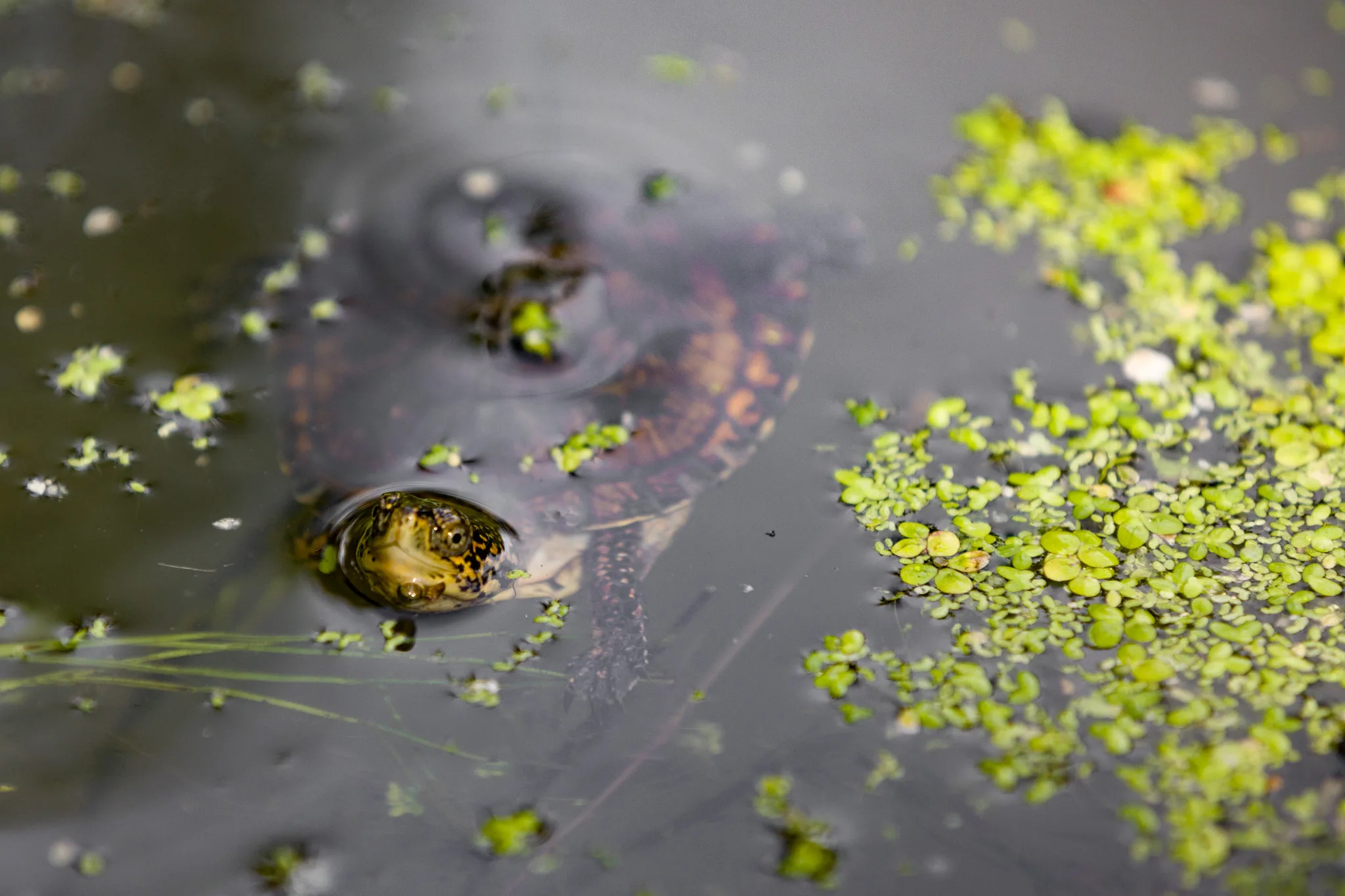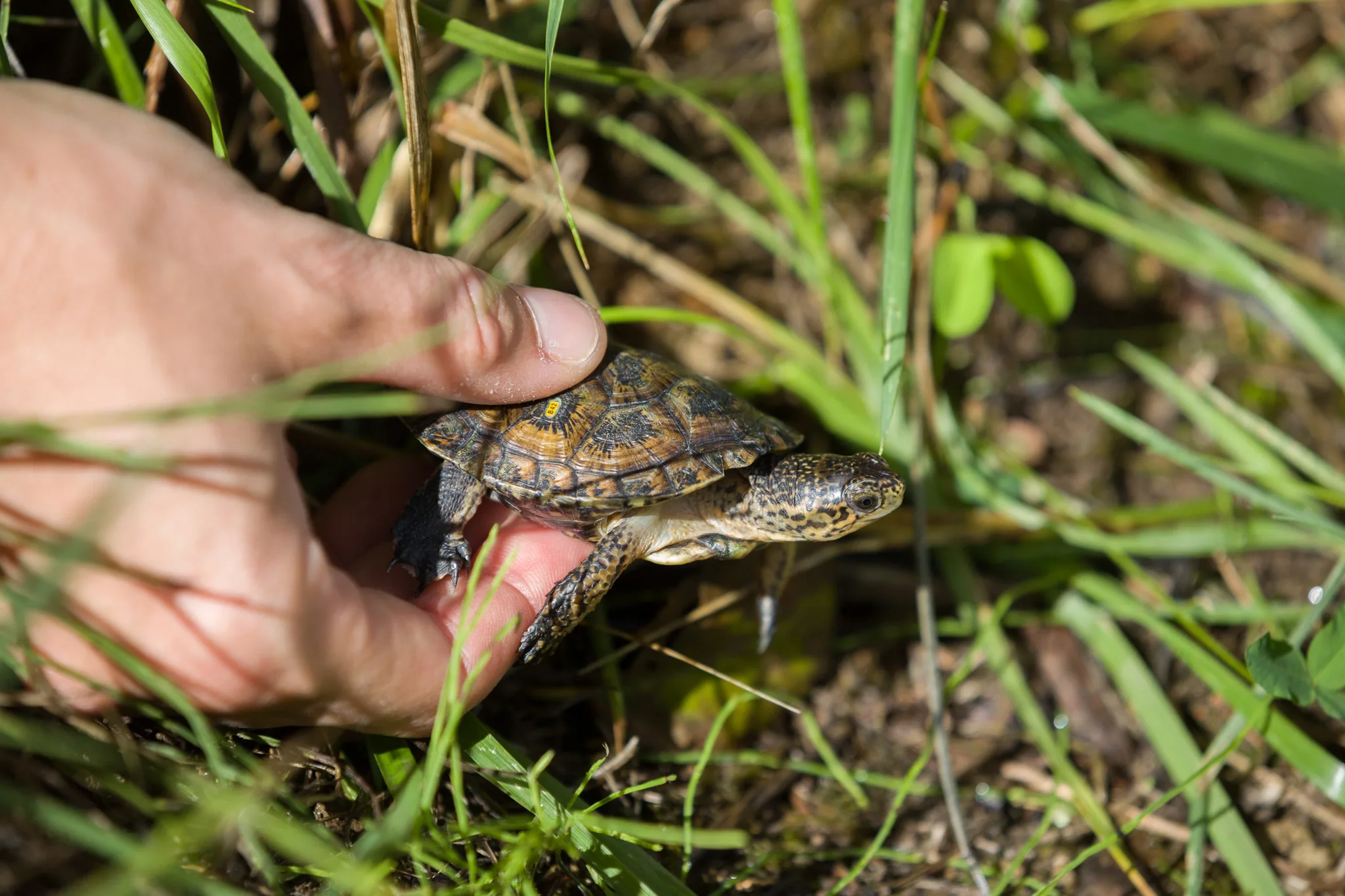Friends’ work in acquiring critical lands, advocating for policies that support habitat and biodiversity, and litigating against those who put wildlife and plants in danger has helped native species such as pika, bald eagles, peregrine falcons, Larch Mountain salamanders, salmon, and steelhead thrive in the Gorge. Right now, our work focuses primarily on two imperiled species: the northwestern pond turtle and the western gray squirrel.
Northwestern Pond Turtle
The northwestern pond turtle (Actinemys marmorata) is one of only two native freshwater turtle species in Washington state. Despite being on Washington’s endangered species list since 1993, their populations have continued to dwindle, not just in Washington but along the entire West Coast. They are threatened by habitat loss, predation by invasive bullfrogs, disease, and competition with non-native turtles.
In 2023, the U.S. Fish and Wildlife Service proposed listing the northwestern pond turtle as a threatened or endangered species under the federal Endangered Species Act. During the agency’s two public comment periods on this proposed listing, Friends submitted multiple letters in support of listing the turtle and organized our members and supporters to do so as well.
The adoption of a federal listing would require the designation of critical habitat, the development and implementation of a species recovery plan, and the availability of federal agency resources to support recovery efforts. A final decision on the listing is expected in 2025.
Friends’ work to protect the northwestern pond turtle extends beyond our advocacy and legal work. Read more about the work our land trust is doing to encourage turtle populations on our preserves here.
Western Gray Squirrel
The Pacific Northwest’s largest tree squirrel, the western gray squirrel (Sciurus griseus) is an iconic species that was once prevalent in pine-dominated forests throughout the Gorge. These squirrels can be differentiated from the more common, invasive eastern gray squirrel by the western gray’s slightly larger size and the absence of any reddish-brown coloring in the western gray’s fur.
Unlike the eastern gray squirrel, which can be found in urban areas, the western gray squirrel only resides in pine and oak forests. Western grays face numerous threats to their numbers, including habitat loss and degradation, wildfires, sprawling development, and disease. This has reduced the species to just three isolated populations in all of Washington state, one of which is in the eastern Gorge.
In December 2023, the Washington Department of Fish and Wildlife listed the western gray squirrel as state-endangered, following strong advocacy from Friends and our members, supporters, and allies.
After the species’ listing as endangered, the Washington Department of Natural Resources (DNR) was required to prepare and submit to the Washington Board of Natural Resources a proposed list of critical habitat for the western grays. At a minimum DNR was required to consider the potential impacts of forest practices on habitats. However, DNR failed to do so within 30 days of the listing as required by law.
In February 2024, Friends joined several other conservation groups in filing a lawsuit against the DNR and the Washington Public Lands Commissioner for this oversight. An appeal in the case is now pending as part of Friends’ current legal docket, as we continue our efforts to ensure proper habitat protection for this sensitive and rare species.
Additional Reading
Latest News
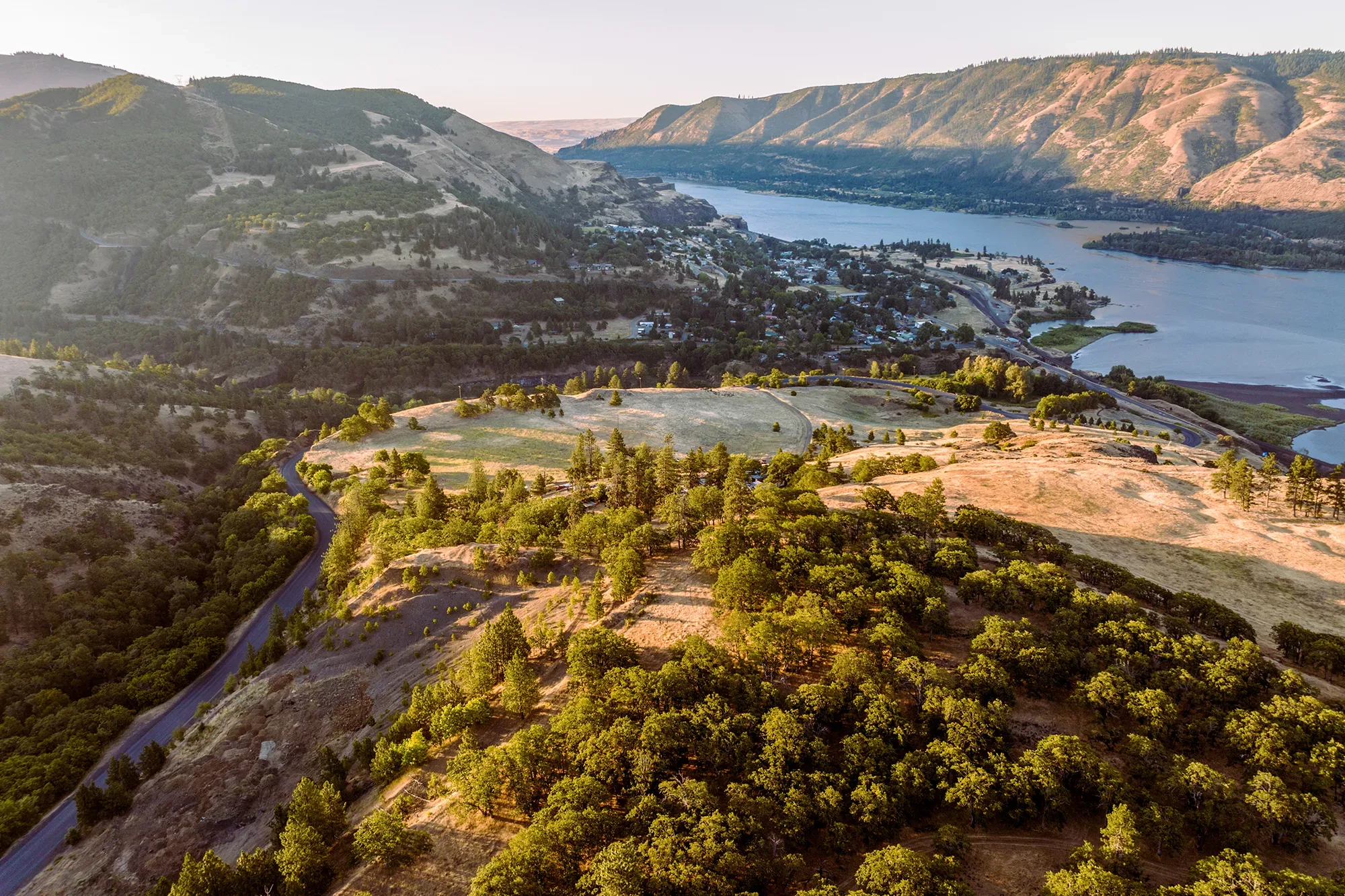
Celebrating the 20th Anniversary of Friends’ Land Trust
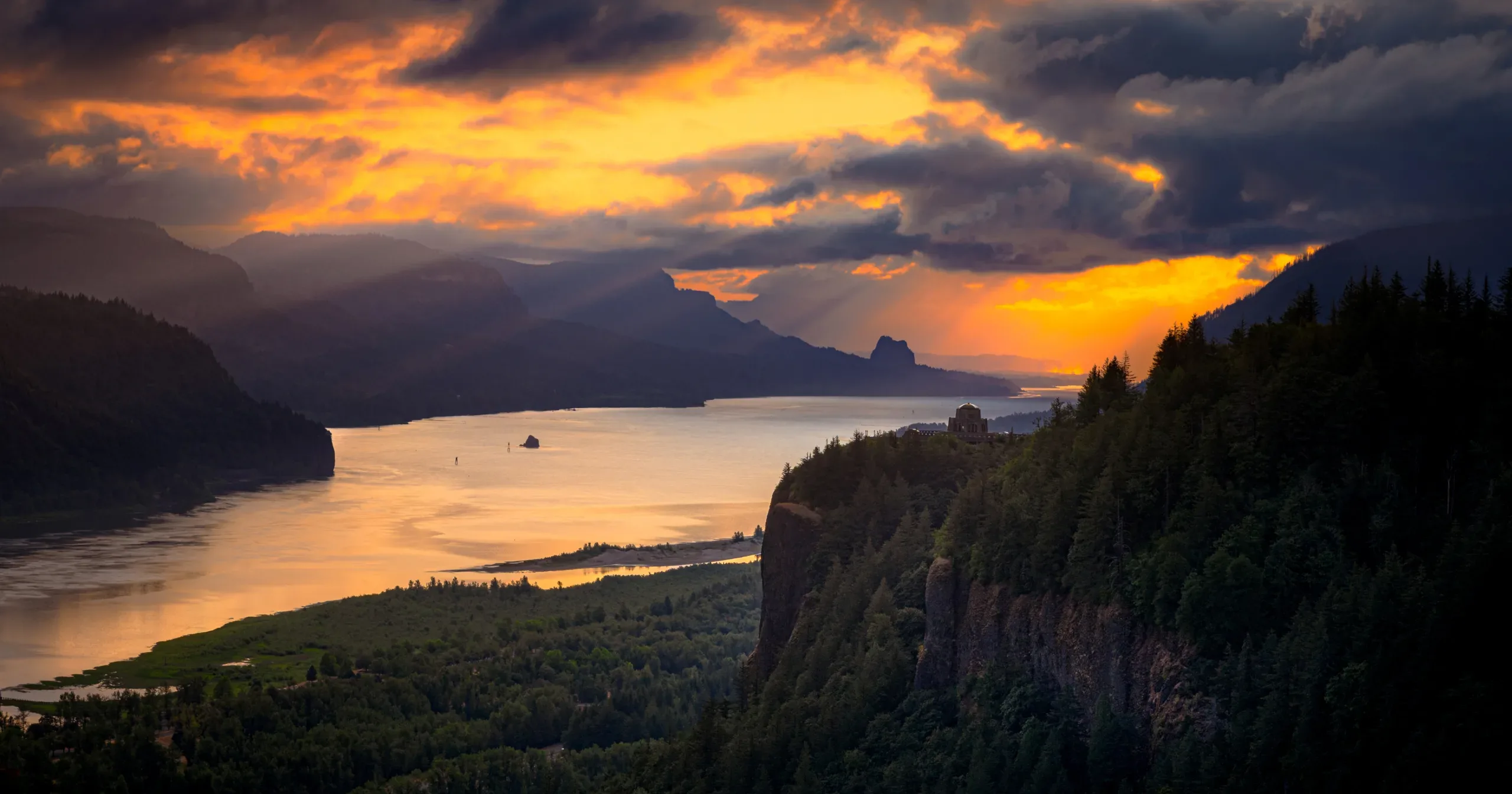
2025 Legislative Sessions: Wins and Challenges in Oregon and Washington
